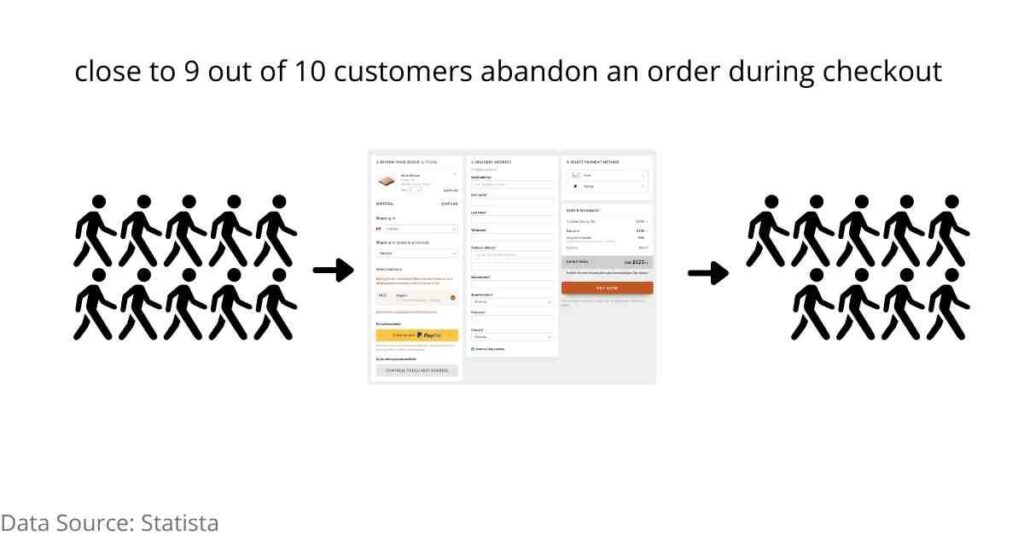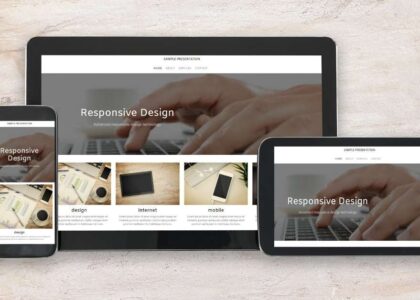Do you want to drive more sales with your ecommerce site?
Today, a business without ecommerce in its sales operations is missing an excellent opportunity to reach customers not accessible through other sales channels.
Many enterprises spotted this opportunity and invested in great web design services to incorporate ecommerce into their businesses in the quest to embrace digital transformation.
Yet still, not every business succeeds in ecommerce despite the ease of entry.
According to estimates by Failory.com, 80% of ecommerce businesses fail. As such, it’s highly likely that most enterprises are not enjoying the full potential of ecommerce platforms to increase their profits.
In most cases, they lack the essential elements of effective ecommerce website design that increase conversions.
The critical elements for creating a powerful eCommerce website that we’re about to discuss are based on the idea of providing customers with the best user experience and driving profitable transactions.
Let’s dive in.
1. Mobile Responsiveness
Smartphones have become an integral part of people’s lives.
From regular communications with friends and relatives to keeping us updated on current events, smartphones enable us to stay connected whenever and wherever we are.
Since most people use mobile phones to access the internet, it’s not a surprise that e-commerce purchases will come from mobile phones.
In a study by OuterBoxDesign on the US market, 79% of smartphone users made purchases using their mobile devices in the preceding 6 months. These statistics demonstrate how important providing a great user experience is for mobile phone users.
It starts with mobile responsive design, one of the critical elements for creating a powerful eCommerce website.
Mobile responsiveness is the ability of a website to be functional and aesthetically appealing on different devices. It does this by adjusting its components to fit different sizes of screens without distortion.

Responsive web design is divided into three main elements;
- Media queries allow the creation of different layouts depending on the sizes of the viewport.
- Web browsers compatibility to enable resizing of images.
- Website interface controls such as drop-down menus and keyboard for great user interaction with the site.
By conforming to the best standards of responsive web design, you empower your ecommerce website to provide smartphone users with the best user experience when searching for products.
A smooth experience ultimately leads to increased chances of transactions.
Yet excellent user experience is only one of the many benefits you can accrue from responsive web design and numerous opportunities you’ll have access to.
For inspiration, check out two of the biggest ecommerce sites; eBay and Amazon, to discover the principles of responsive web design.
2. High-Quality Images
Like in other sites, high-quality imagery is one of the most integral elements of a good ecommerce website.
Low quality and poorly captured images of products do little to encourage customers into buying products.
First, humans are visual beings who process visual information a thousand times faster than written content.
Online shoppers crave high quality and detailed photos since the online shopping experience competes with the sensory thrills of the in-person experience.
Airbnb found out that properties with professional photos are booked 2.5X more than those with amateur photos.
By taking high-quality photos, you offer customers a user experience close to what they’d get from an actual brick and mortar shopping experience.
Essentially, you’ll use a thumbnail image for each product on the category pages. However, when customers access a product page, they should see a larger and more detailed image.
They should also be able to zoom in to see finer details of the product, an experience closer to touching the actual product and seeing its material. This ability is possible through pinch features, sliders and magnifying glass features.
Besides the fact that images make the content interesting and including them is a good SEO practice, using optimized images enhances user experiences and improves conversion rates.
At the very least, you don’t want your images taking minutes to load as customers will not wait. Using light image formats such as JPEG and WEBP can significantly increase loading time.
High-quality images are essential elements of effective ecommerce website design that significantly improve conversions.
3. Easy Site Navigation
Smartphone users expect your ecommerce site to be easily navigable. They want to look for and find products with ease.
Hence an easily navigable design is one of the critical elements for creating a powerful ecommerce website.
According to Baymard, the average cart abandonment rate is 69.8% based on 44 different studies. A significant portion of sellers abandons carts due to bad navigation systems.
To encourage customers to make more purchases you need to streamline your site’s navigation.
Start by making parent categories prominent. Use the main menu to display the most important parts of your site and the dropdown feature for product categories.
With a simple menu click, a customer should know what your ecommerce site sells.

Then, you should introduce your subcategories through an expandable filtered options feature on your homepage.
By guiding customers to a more specific group of items, you increase the opportunities for more time spent on-site with enhanced click-through rates for better metrics.
In addition, remember to have a noticeable search bar on site pages.
Lastly, use labels to help guide customers through the site. Every product and button should be clearly labelled with simple language.
Jazzing up your site might result in customers trying to decipher the meaning and clicking randomly with hopes of landing on products they want.
Implementing simple ecommerce navigation best practices is part of the essential elements of a good ecommerce website.
The same way you’d expect to easily navigate a supermarket, find a product and make a quick purchase, ecommerce customers want an equally simple experience.
4. User Rating and Reviews
User-generated content can be very instrumental in improving your ecommerce site reputation and driving more sales.
At the very least, it acts as social proof. Users can see that other customers have interacted with your site and will be encouraged to engage with you.
A study by PowerReviews found that 95% of consumers read reviews and 86% considered them an essential resource when making purchase decisions.
As for me, I never make any online purchase without a review and I know many colleagues who share my sentiments.
Ratings and reviews have become an integral part of online transactions. People prefer seeing a product before purchasing. But in ecommerce, they can only see a picture or model of the product.
However, ratings and reviews act as the next effective sources of confidence. And the more they are the better.

Ratings and reviews are critical elements for creating a powerful eCommerce website.
Start by providing an intuitive site layout that displays ratings and reviews prominently within product pages.
Ratings offer an average opinion of a product’s quality thus enabling buyers to make a quick comparison between similar products from different vendors.
Meanwhile, reviews which are personal stories from previous customers help potential customers connect with a brand and substantiate the average ratings of a product.
In addition, you should make it simple for verified customers to rate products and leave comments.
Remember, negative reviews can be damaging. A study by Fan&Fuel found that a single negative review can stop 35% of customers from purchasing a product.
So you want to make sure to respond to dissatisfied customers, solve their issues and encourage them to leave a follow-up review that encourages potential customers to make purchases.
5. Simple Checkout Process Flow
Most retailers focus on site design, images and great user interface but overlook the checkout process yet it is one of the essential elements of a good ecommerce website.
Checkout is the final stage of a customer’s journey. If you fail to smoothen this stage, all other strategies you have implemented to drive sales through your ecommerce site will go to waste.
According to Statista, 88.05 % of online shopping orders were abandoned worldwide.
While there are numerous reasons as to why customers would abandon an order, disappointing checkout systems significantly contribute to this phenomenon.
Such systems are characterized by
- Hidden costs such as shipping, taxes and other fees
- Forced registration
- Too many mandatory details required.
With so many customers lost at the final ecommerce transaction stage, it’s clear that optimizing your checkout should be a priority if you want to increase sales.

So, how do you optimize your checkout?
Let’s go through a handful of many checkout flow optimization strategies to improve purchase rates.
For a start, you need to reduce the number of clicks a customer has to go through to make a purchase. The lesser the details the better. The three integral steps to include are address, delivery and payment.
Secondly, remove distractions from the checkout page to keep customers focused on the one profitable action.
While it’s necessary to include menus and navigational cues in all pages for easy manoeuvring of a customer, the checkout page needs to be as simple as possible.
Lastly, clearly display all the fees and charges early on for full disclosure and to avoid unpleasant surprises.
Conclusion
As a business owner, you want to use every means possible to get products to your customers. Using ecommerce platforms the right way empowers you to do so cost-effectively.
The five essential elements of effective ecommerce website design above will significantly impact customers’ experience and drive conversions up the roof.
Here at Glivers, we understand the critical elements of a good eCommerce website and always implement them in our clients’ websites to drive better conversions.
If you’re interested in a complete overhaul of your ecommerce website or launching a new site, book a free consultation with our web development team to talk about an effective eCommerce web design strategy.
We are committed to helping your business grow and succeed with ecommerce.





